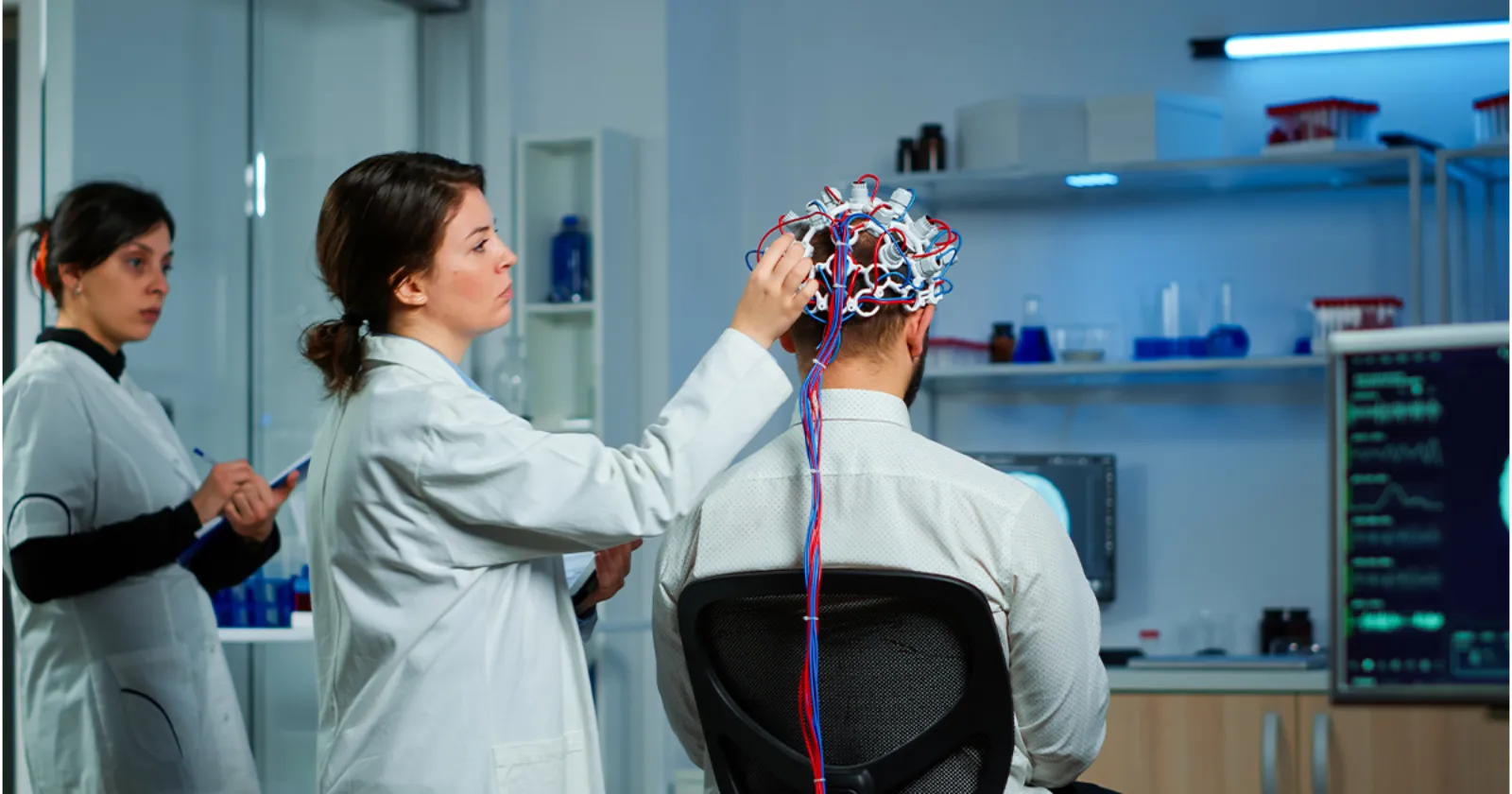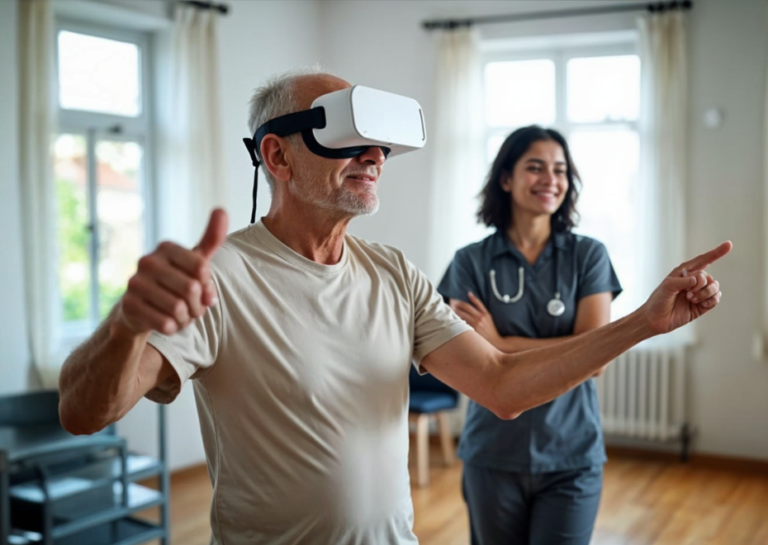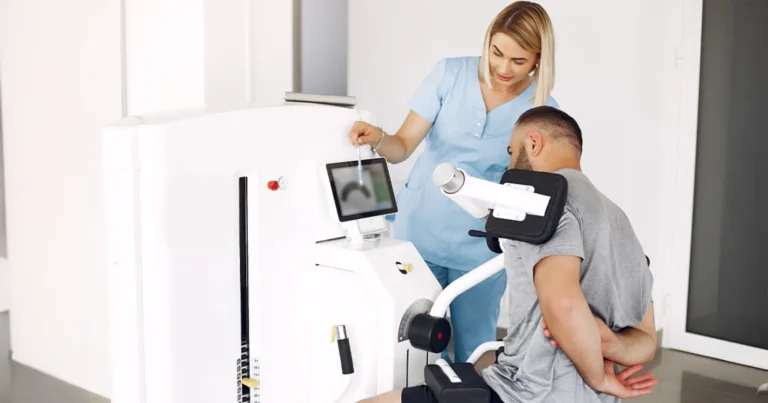Book Appointment Now

SCI Recovery: The Role of Neuroplasticity in Healing
Spinal Cord Injury (SCI) is a devastating condition that can result in partial or complete loss of motor, sensory, and autonomic functions below the level of injury. Despite the profound consequences of SCI, recent advancements in neuroscience have shed light on the remarkable ability of the human nervous system to adapt and rewire itself—a phenomenon known as neuroplasticity. This concept has gained significant attention in the scientific community as a critical factor in the recovery and rehabilitation of individuals with SCI. Neuroplasticity offers promising avenues for improved outcomes, particularly when integrated with advanced rehabilitation techniques and modern medical interventions.
This article explores the science behind neuroplasticity, its role in SCI recovery, and how therapeutic strategies harness this potential to aid in healing and improving the quality of life for those affected by spinal cord injuries.
The Science of Neuroplasticity
Neuroplasticity refers to the nervous system’s capacity to reorganize its structure, function, and connections in response to injury, learning, or environmental changes. Contrary to earlier beliefs that the adult brain was fixed and incapable of regeneration, extensive research has demonstrated that both the brain and spinal cord are dynamic, capable of forming new neural pathways and modifying existing ones.
Neuroplasticity manifests at various levels:
- Synaptic Plasticity: Alterations in the strength of synaptic connections between neurons.
- Cortical Reorganization: The brain’s ability to reassign functions to different areas, particularly when certain regions are compromised.
- Structural Plasticity: Physical changes in the brain, including neurogenesis and the growth of dendritic branches.
In the context of spinal cord injury, neuroplasticity provides the foundation for recovery by enabling surviving neurons to compensate for damaged ones, potentially restoring function.
The Impact of SCI on the Nervous System
The spinal cord plays a critical role in the central nervous system, facilitating signal transmission between the brain and the rest of the body. When the spinal cord sustains damage due to trauma, disease, or injury, this communication can be severely disrupted, leading to paralysis, loss of sensation, and impaired autonomic functions. The severity of these effects is directly correlated with the location and extent of the injury.
SCI presents two significant challenges:
- Loss of Neuronal Connections: The injury disrupts the pathways that enable communication between the brain and the body, compromising neurons that once transmitted signals for movement, touch, or other sensory input.
- Glial Scarring: In response to injury, the body forms a scar around the damaged area, which can further impede nerve regeneration and reconnection.
While the spinal cord has limited regenerative capacity, the nervous system can still adapt in ways that enable functional recovery. This adaptability is where neuroplasticity plays a crucial role.
Neuroplasticity in SCI Recovery
Neuroplasticity aids individuals with SCI by allowing the brain and spinal cord to reorganize and form new neural pathways, which can compensate for the loss of function caused by the injury. The following mechanisms illustrate how neuroplasticity contributes to SCI recovery:
- Cortical Remapping and Compensation – Following a spinal cord injury, areas of the brain responsible for controlling now-lost functions may begin to shift their responsibilities. This process, known as cortical remapping, enables different regions of the brain to assume the roles of damaged areas.
For instance, if motor control over a limb is lost, the brain might begin to reorganize and strengthen neural pathways in other areas that still retain function. Over time, this can help individuals regain some control over movements that were previously compromised. - Strengthening of Synaptic Connections – Neuroplasticity allows for the reinforcement of remaining synaptic connections, even in the presence of injury. Repeated stimulation of these pathways through targeted rehabilitation and therapy can enhance motor and sensory functions. This phenomenon is often observed in individuals who engage in intensive physical therapy after SCI, where repetition and practice lead to improved outcomes.
- Axonal Sprouting and Collateral Pathways – In cases of incomplete spinal cord injury, surviving neurons may grow new axons—a process known as axonal sprouting—to connect with other neurons and form collateral pathways around the damaged area. These new connections may help bypass the injury site, allowing signals to continue to flow between the brain and the body.
While these collateral pathways may not fully restore normal function, they can significantly improve an individual’s ability to move, sense, or control certain bodily functions. - Motor Learning and Functional Retraining – One of the most effective ways to encourage neuroplasticity in SCI recovery is through motor learning and functional retraining. This involves engaging in specific tasks and exercises designed to stimulate neural circuits and promote recovery.
Rehabilitative techniques such as task-specific training, robot-assisted movement therapy, and virtual reality-based rehabilitation encourage repeated practice of movements or actions that enhance motor skills and promote neural rewiring. These practices leverage the brain’s plasticity, helping patients regain control over movements and sensory functions. - The Role of Assisted Technologies – Advanced technologies such as brain-computer interfaces (BCI) and functional electrical stimulation (FES) are being utilized to harness neuroplasticity in SCI recovery. BCIs can translate brain signals into commands that control external devices like robotic limbs, which can help stimulate movement. FES uses electrical impulses to activate paralyzed muscles, encouraging functional movement and promoting neural rewiring.
By integrating these technologies with traditional rehabilitative therapies, neuroplasticity can be further stimulated, offering patients a greater potential for recovery.
Rehabilitation Techniques to Enhance Neuroplasticity
Several therapeutic strategies have demonstrated efficacy in enhancing neuroplasticity in individuals with SCI, aiding in functional recovery:
- Intensive Physical Therapy: Repeated, targeted physical exercises and tasks that challenge motor and sensory functions.
- Robotic-Assisted Therapy: Devices that assist with movement, helping the nervous system learn to regain control over impaired muscles.
- Electrical Stimulation: Techniques like FES help activate paralyzed muscles and promote neural connections.
- Cognitive Behavioral Therapy (CBT): Mental exercises can support emotional regulation and promote adaptive plasticity, enhancing overall recovery.
- Non-Invasive Brain Stimulation: Techniques such as transcranial magnetic stimulation (TMS) can stimulate areas of the brain to encourage neuroplastic changes.
Conclusion: The Future of SCI Recovery Through NeuroplasticityConclusion: The Future of SCI Recovery Through Neuroplasticity
While SCI remains a devastating injury, the understanding of neuroplasticity has revolutionized approaches to recovery. By harnessing the nervous system’s ability to adapt and reorganize, individuals with SCI are offered new opportunities for functional recovery and improved quality of life. Therapeutic interventions that stimulate neuroplasticity—whether through physical therapy, technological advancements, or cognitive approaches—offer the potential to restore movement, sensation, and independence.
The future of SCI recovery is promising, with ongoing research into neuroplasticity continually unveiling new ways to promote healing and adaptation to spinal cord injuries. Through consistent rehabilitation and the application of neuroplastic principles, individuals with SCI can achieve remarkable levels of recovery, transforming what was once thought impossible into attainable goals.
As research progresses and our understanding of neuroplasticity deepens, we can anticipate even more innovative and effective treatments for SCI. This evolving field offers hope to those affected by spinal cord injuries and underscores the importance of continued investment in neuroscientific research and rehabilitation technologies.



